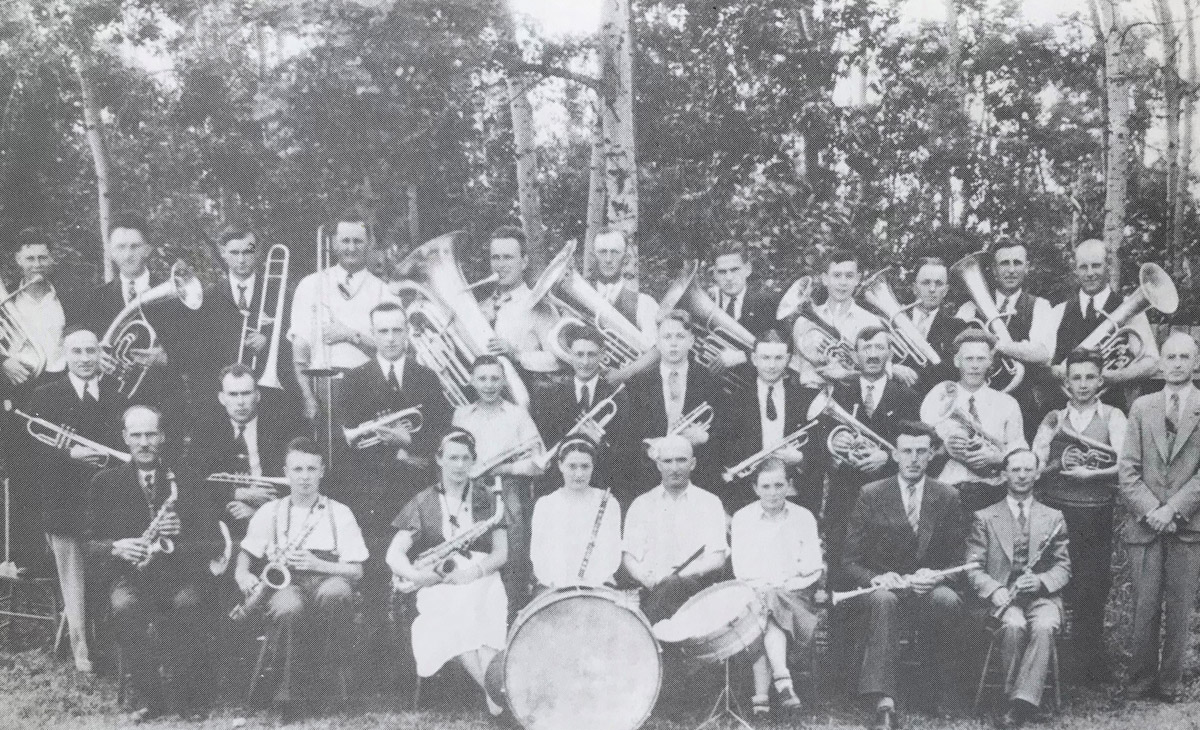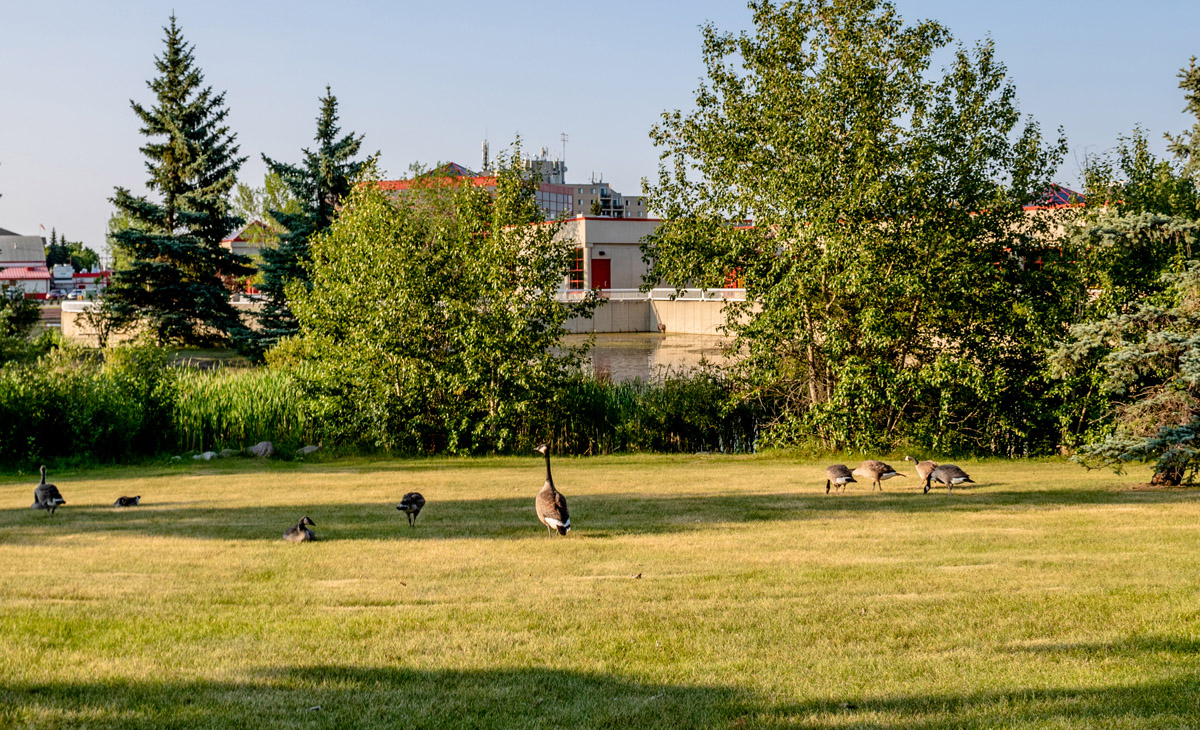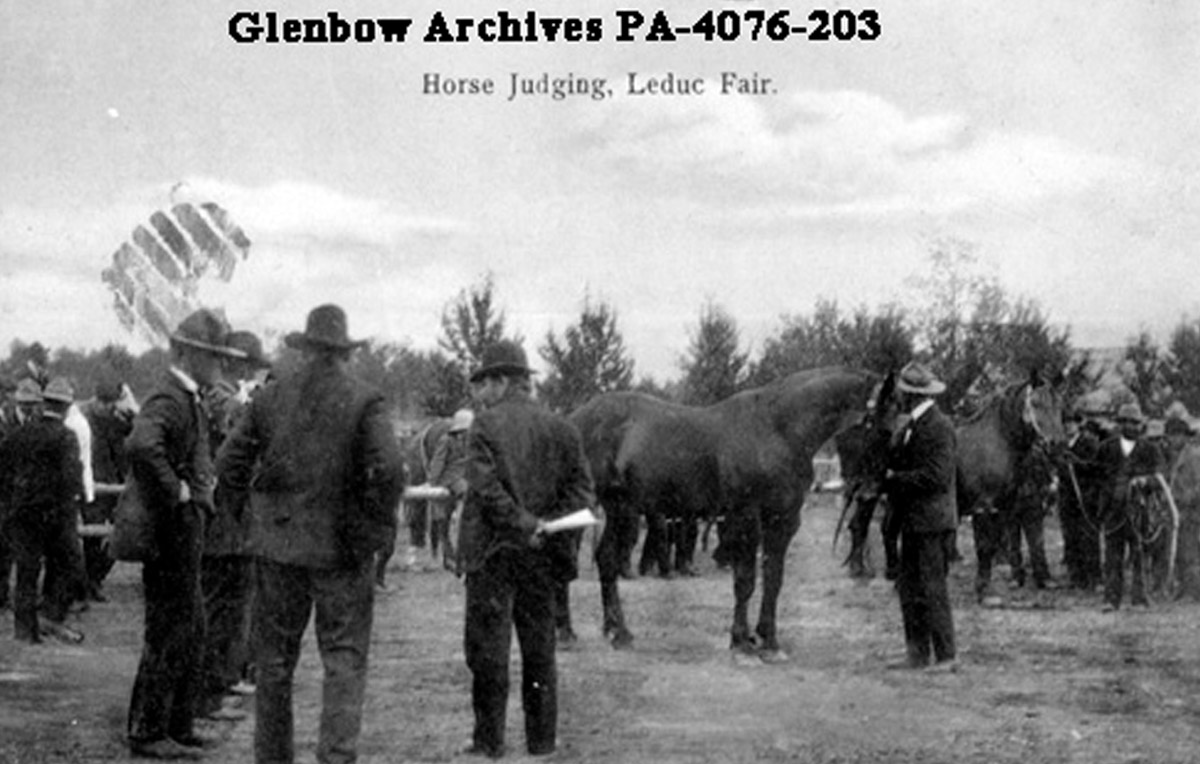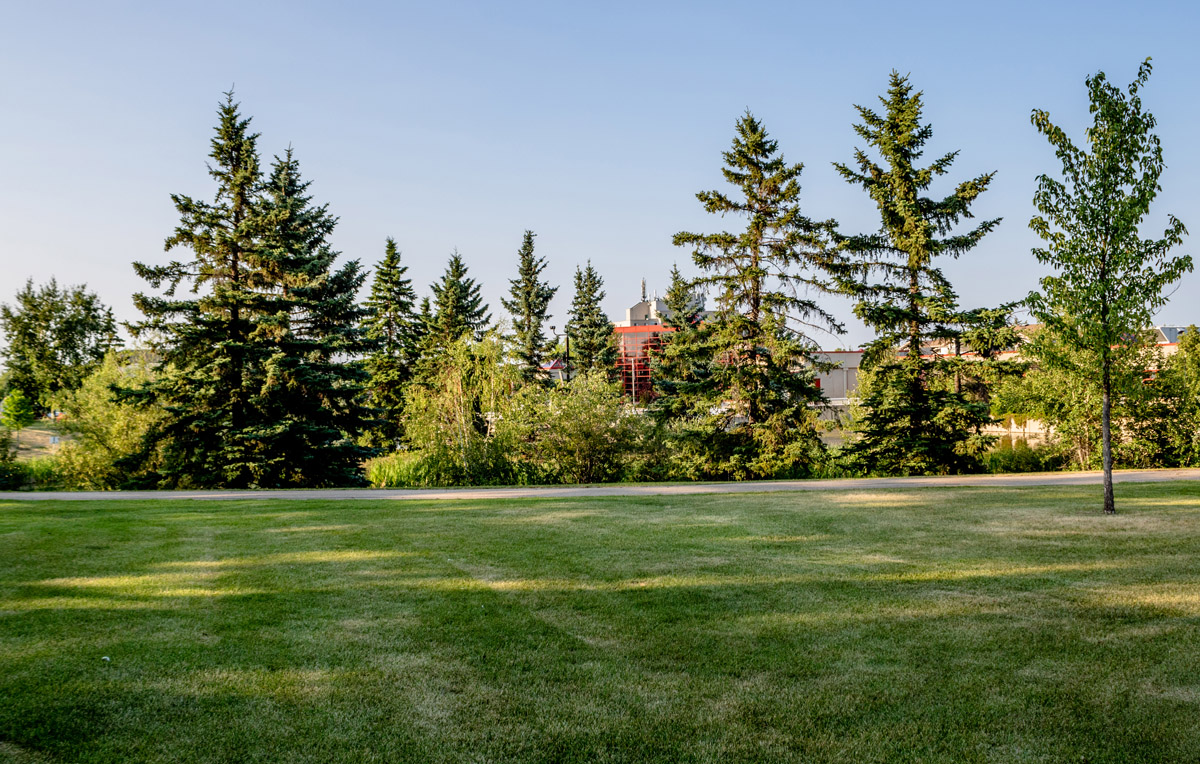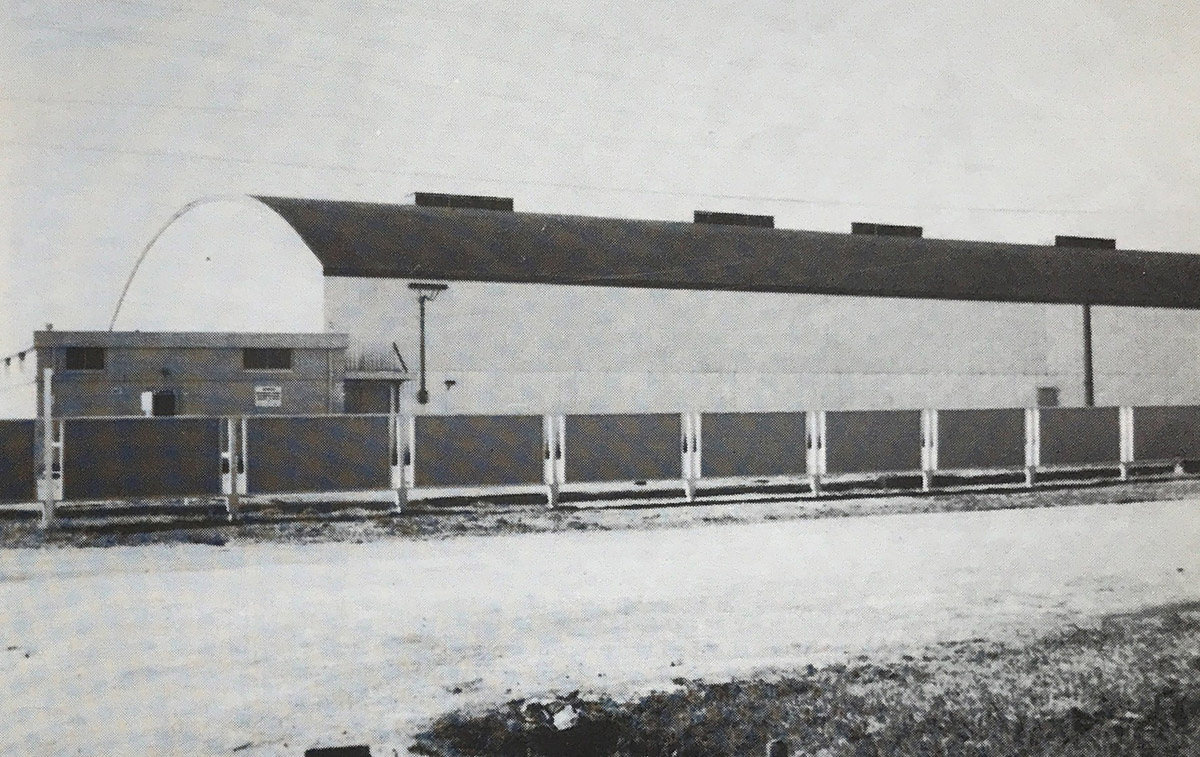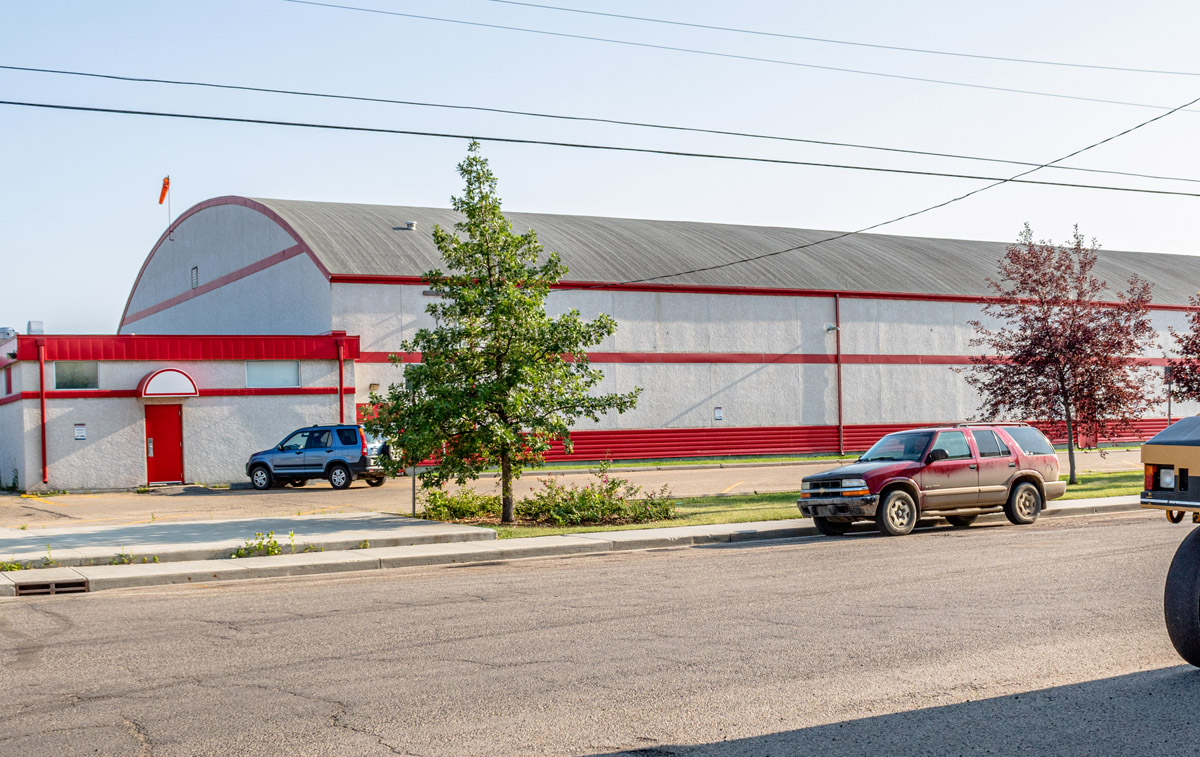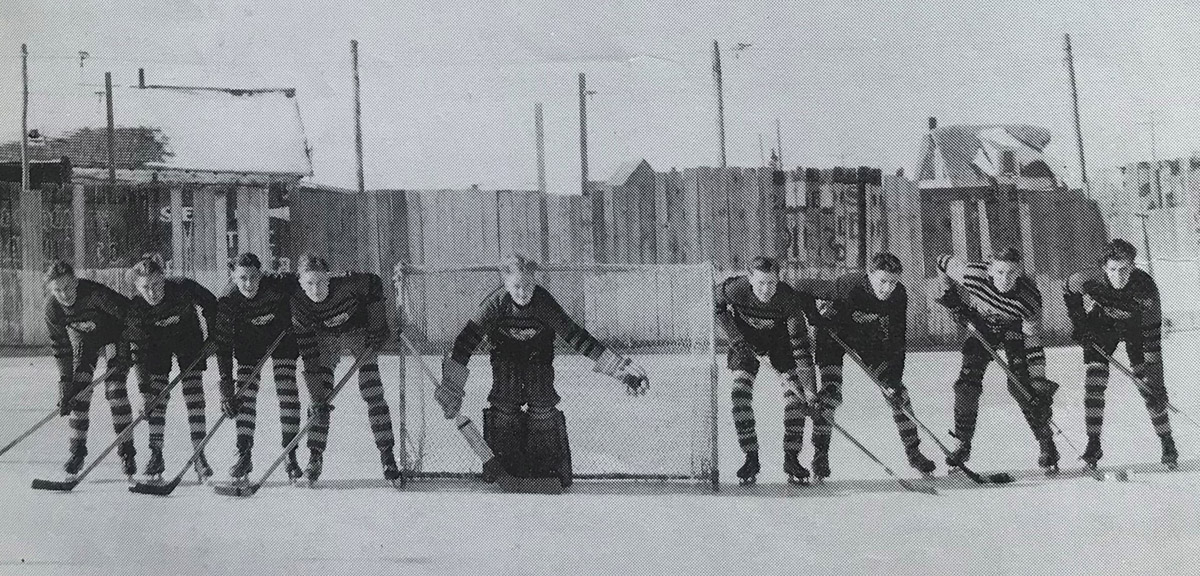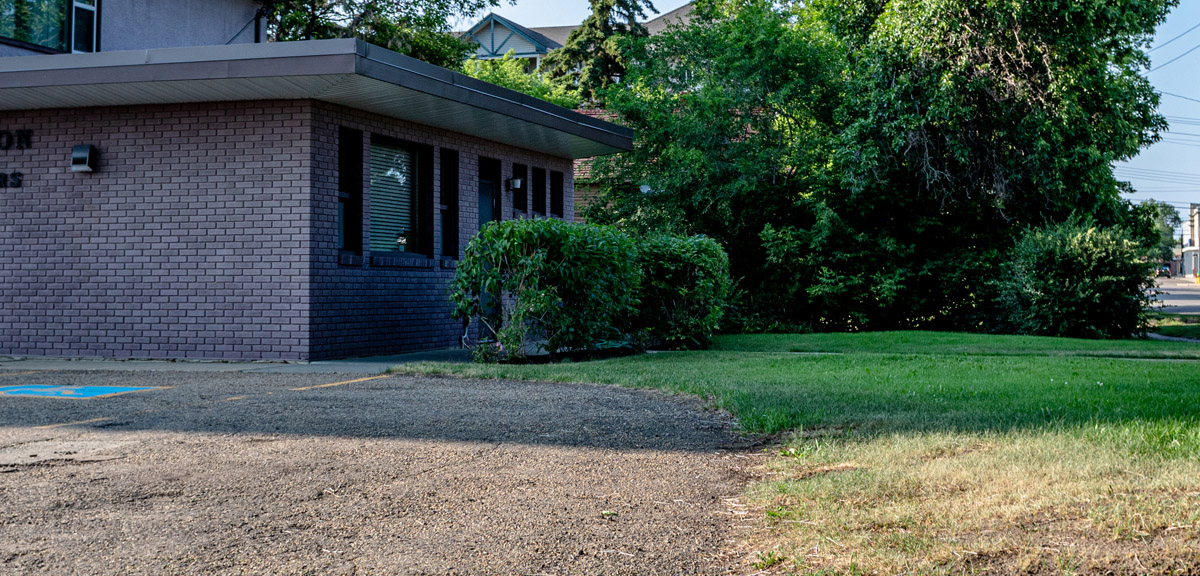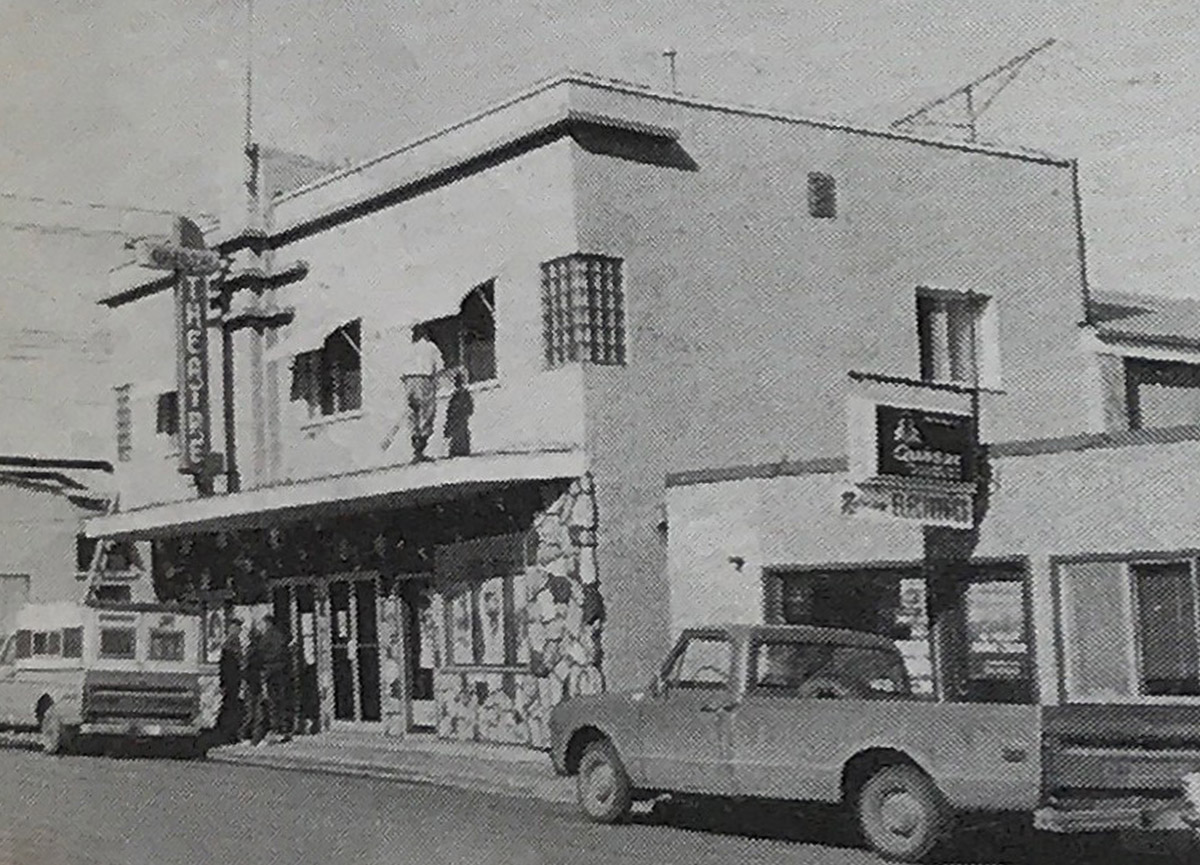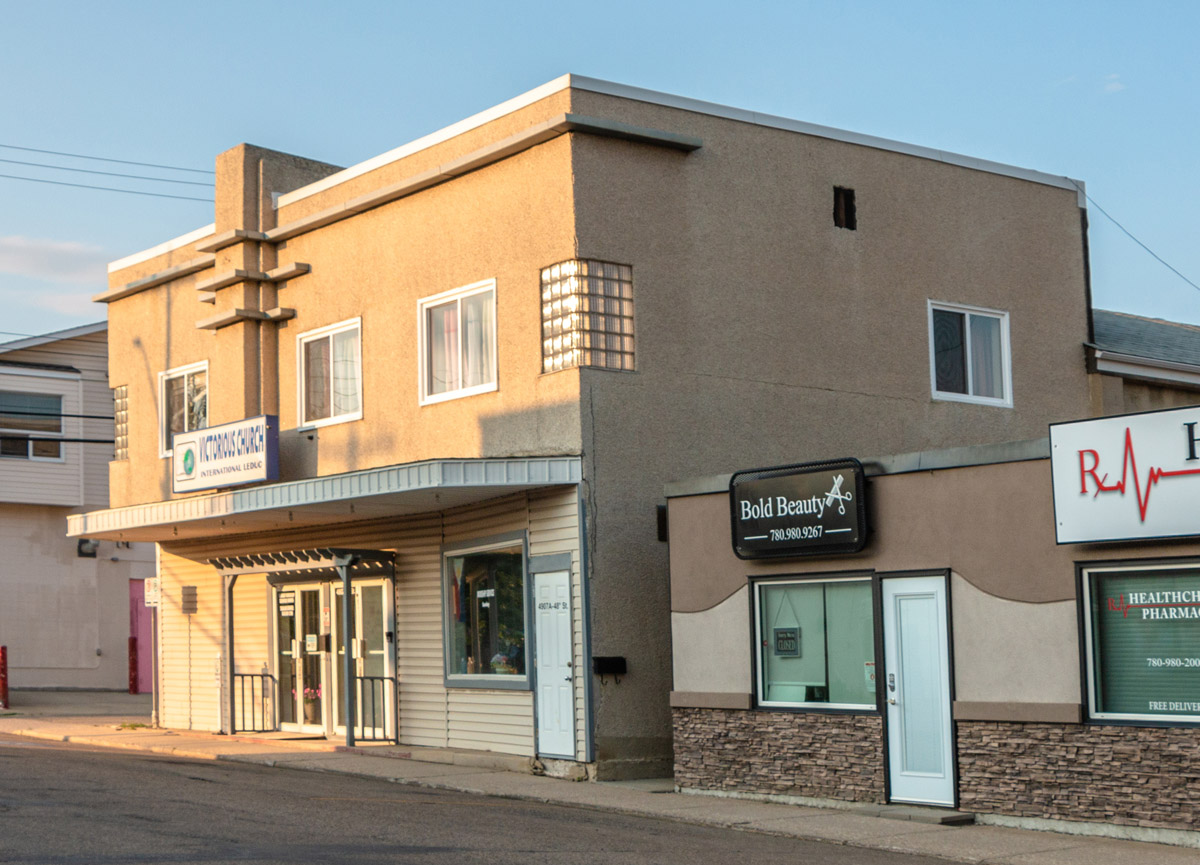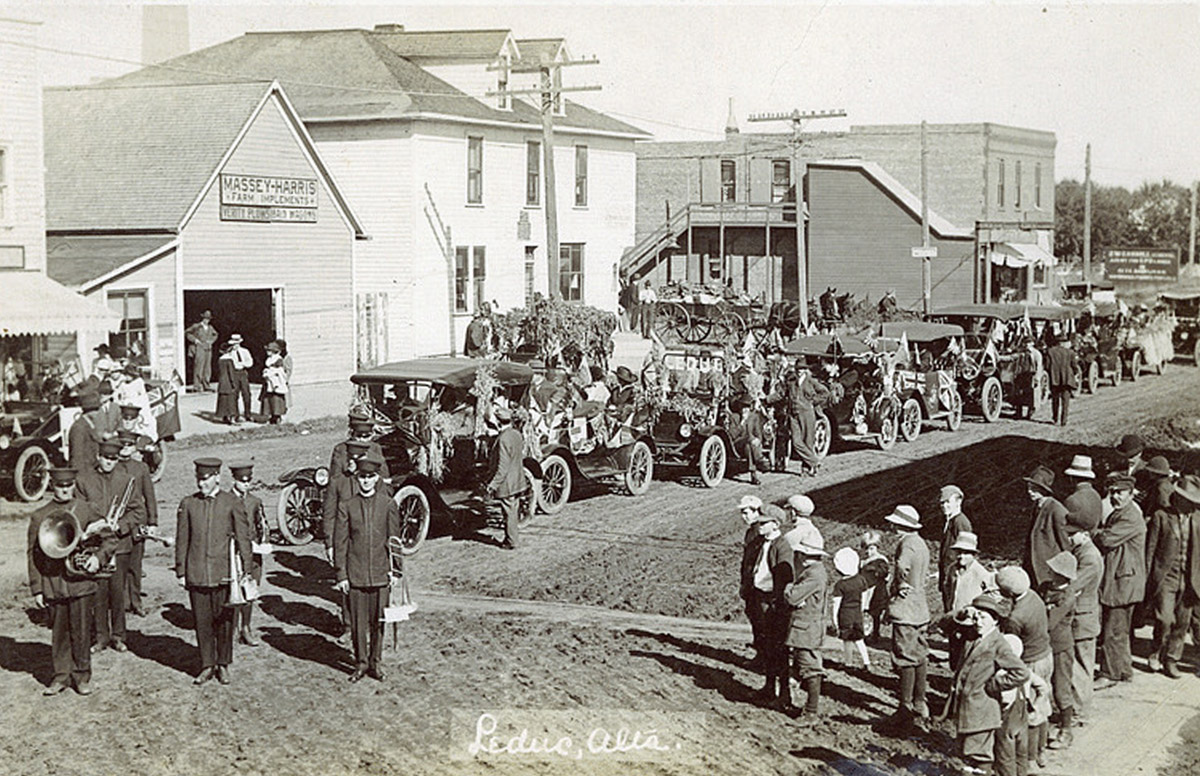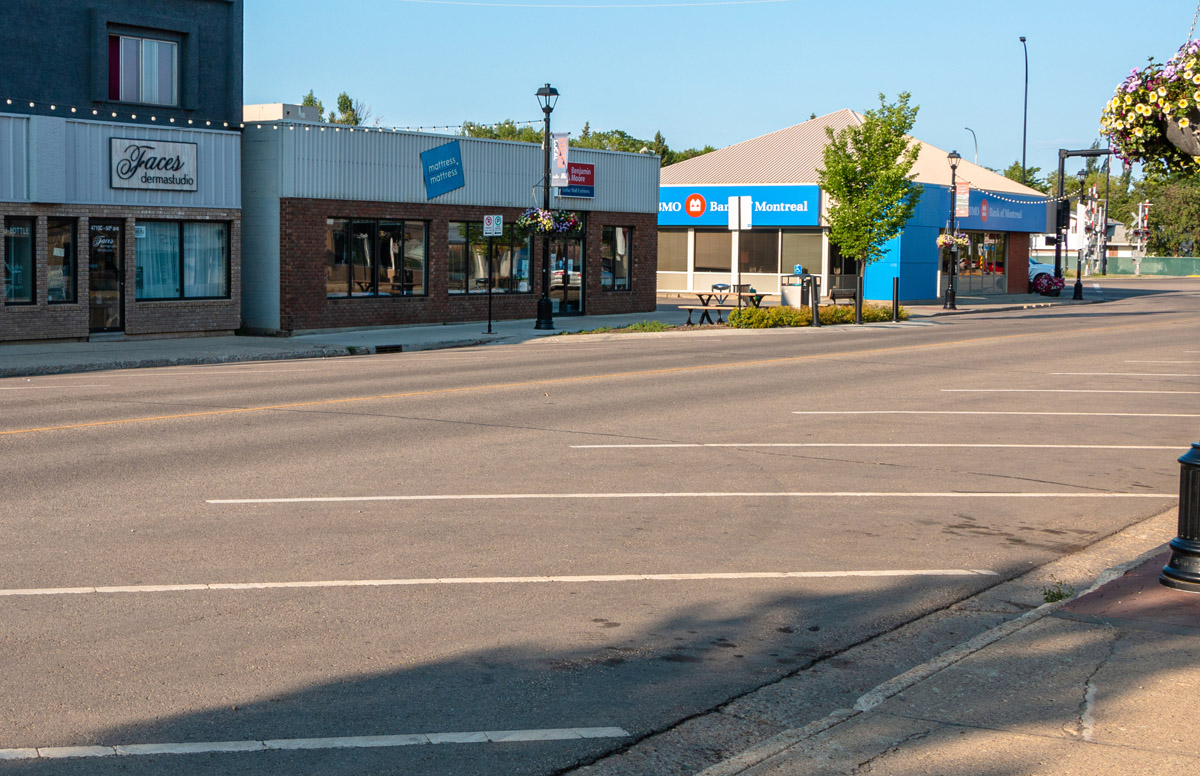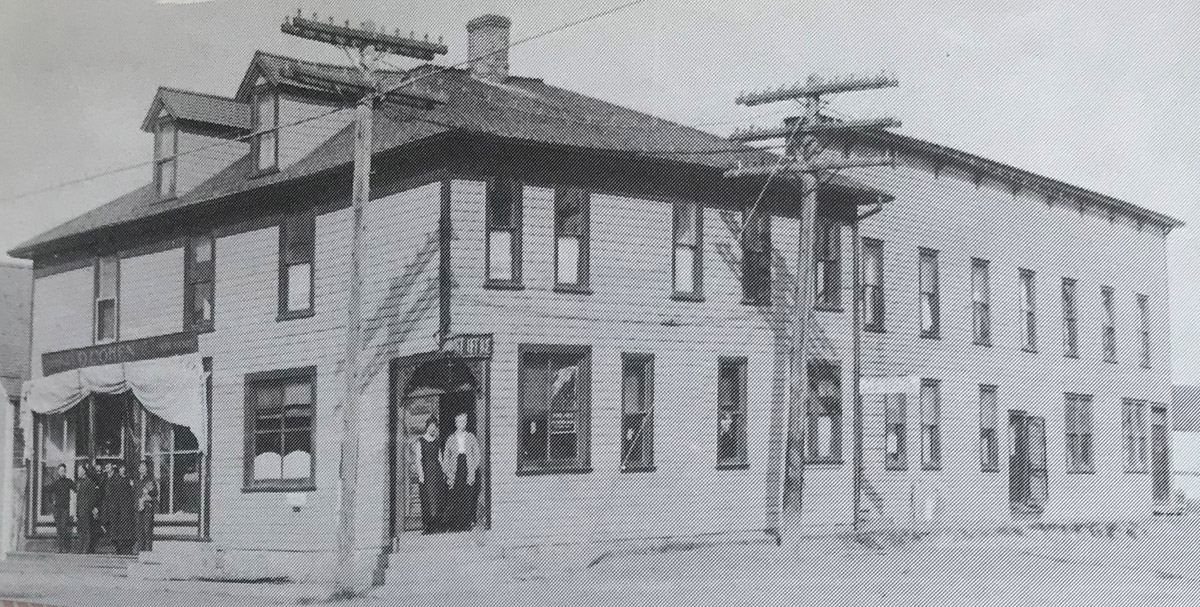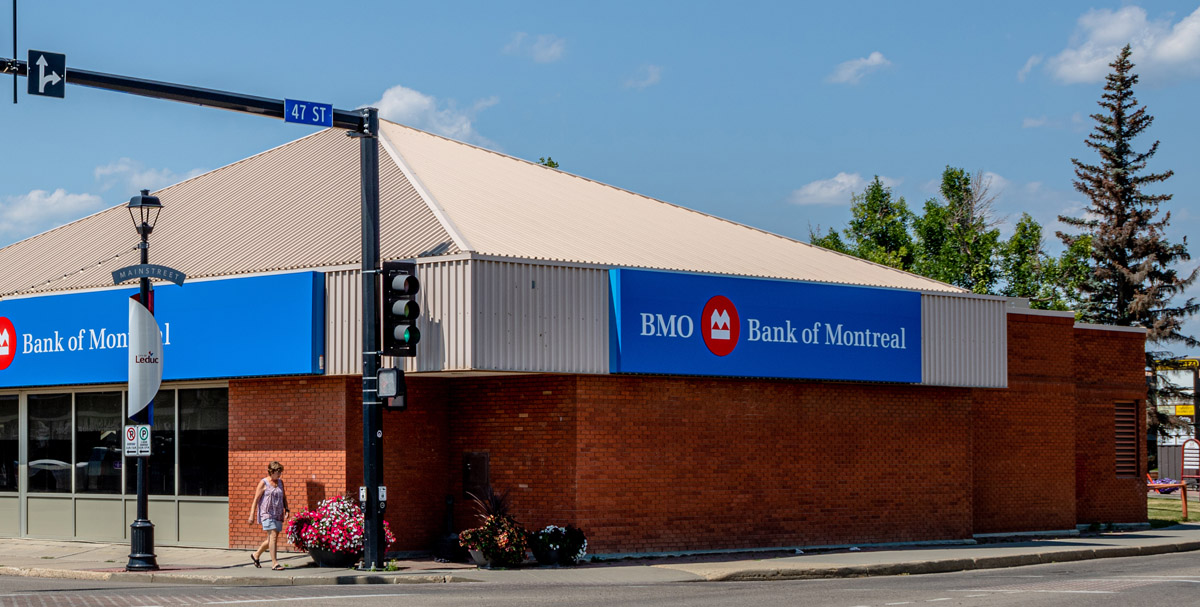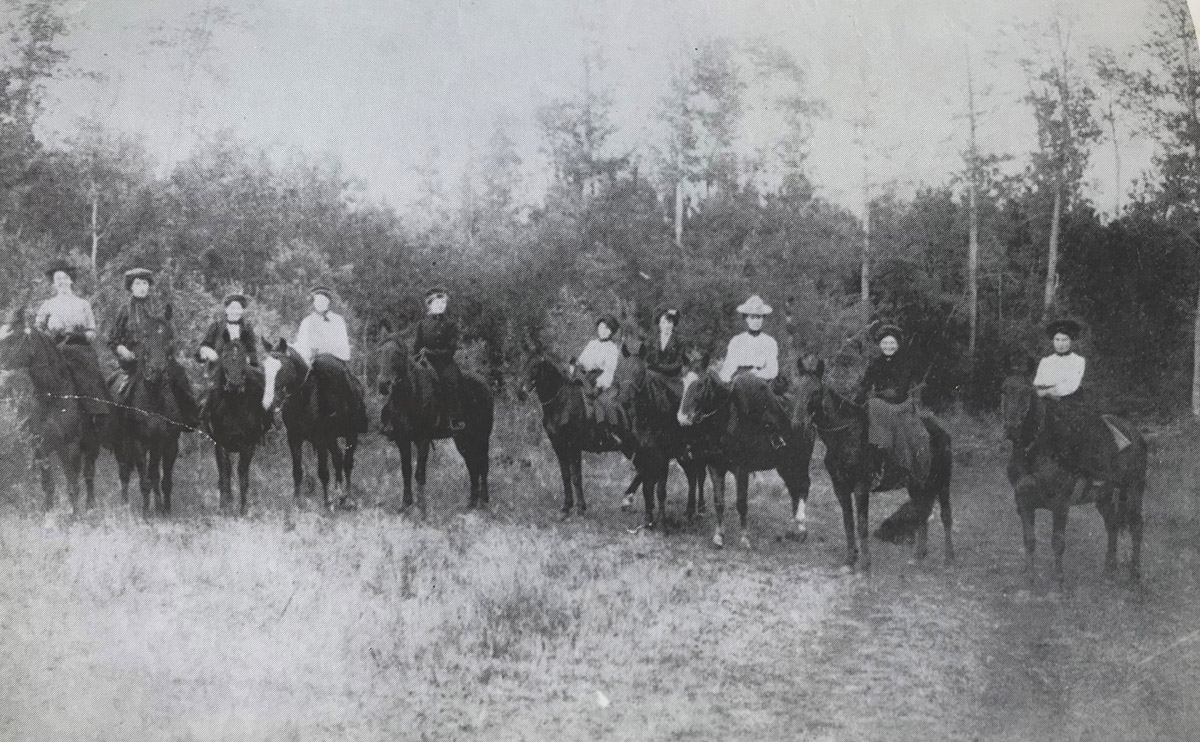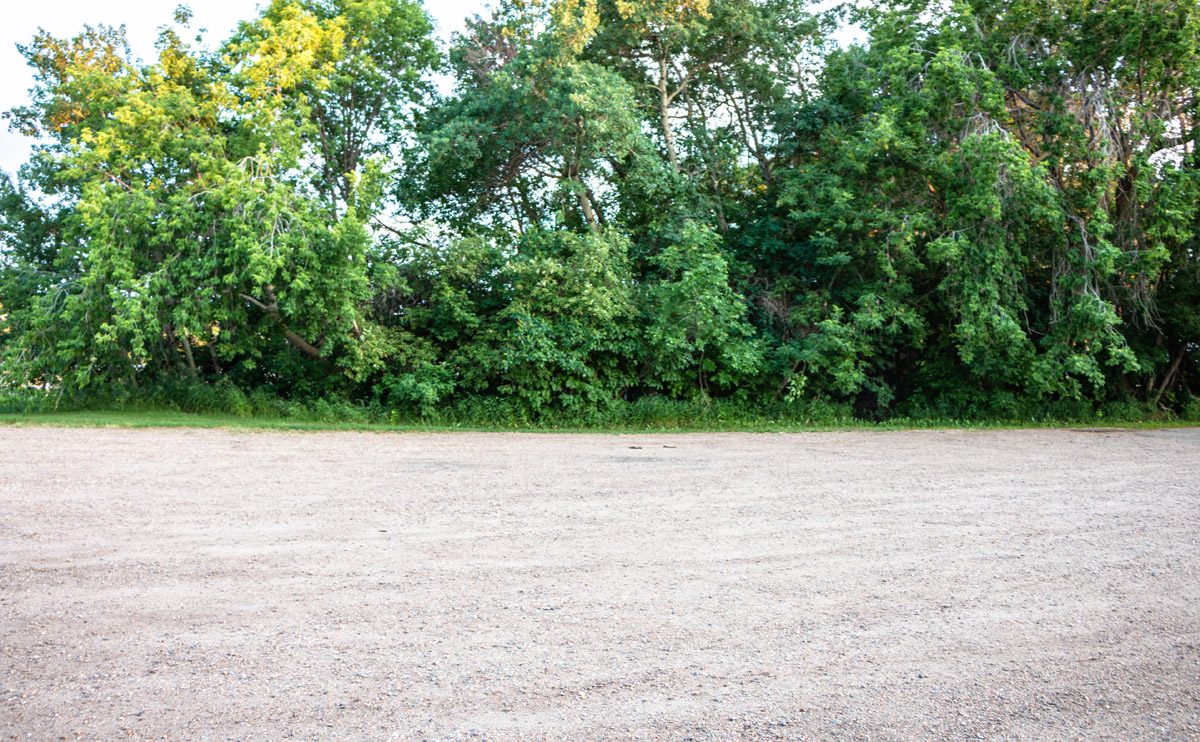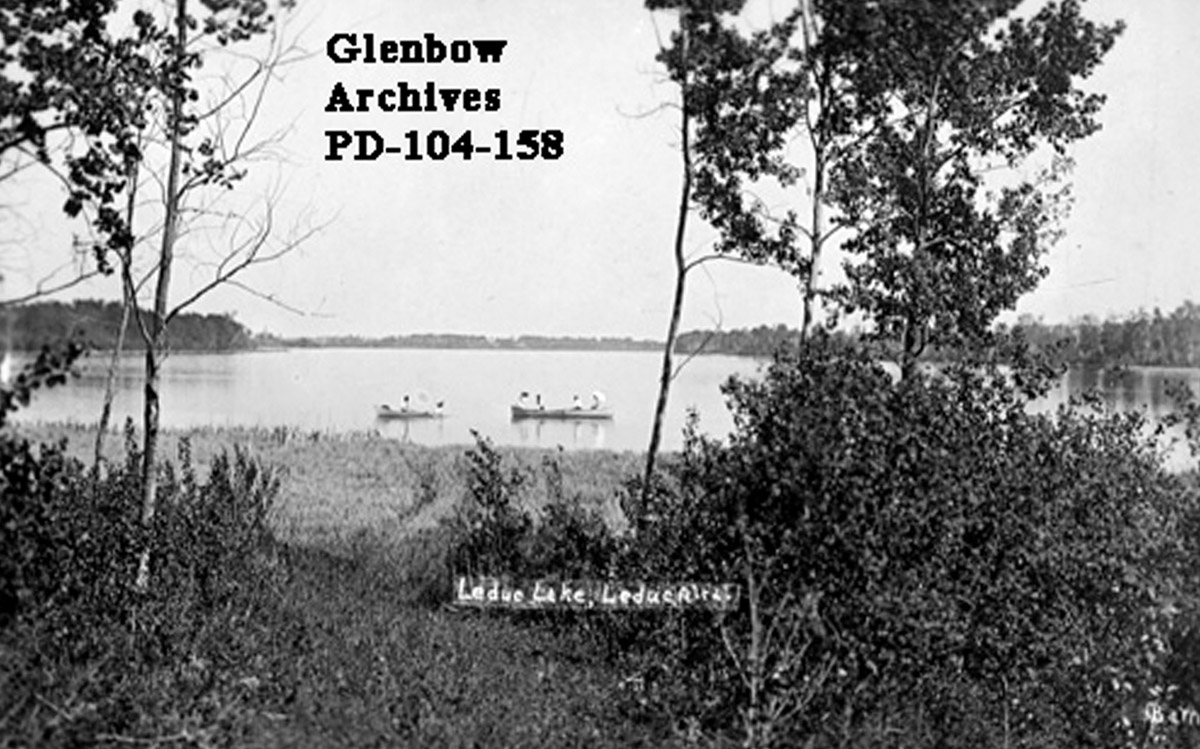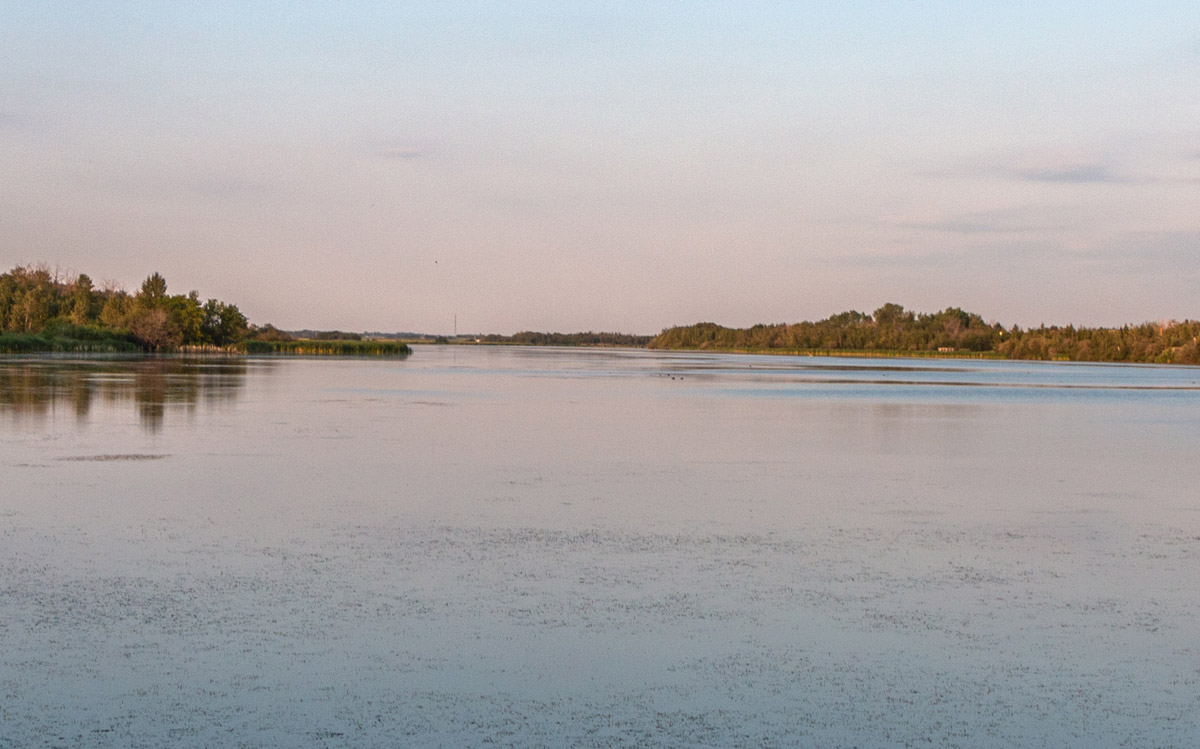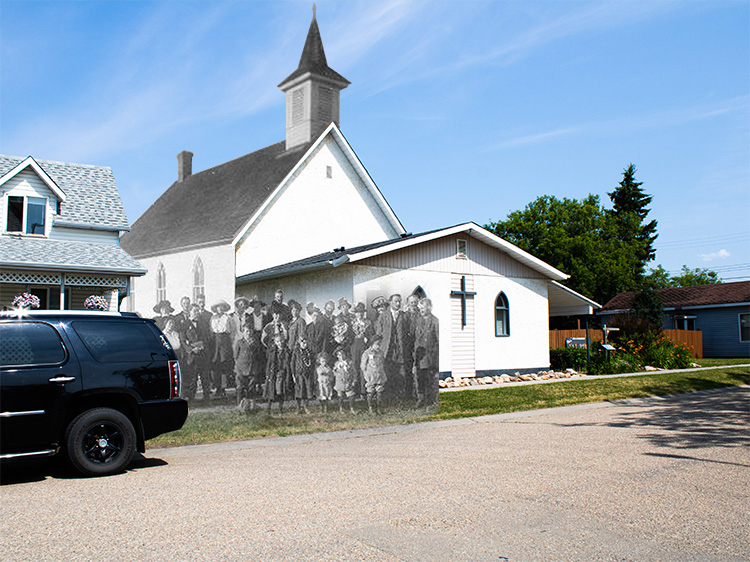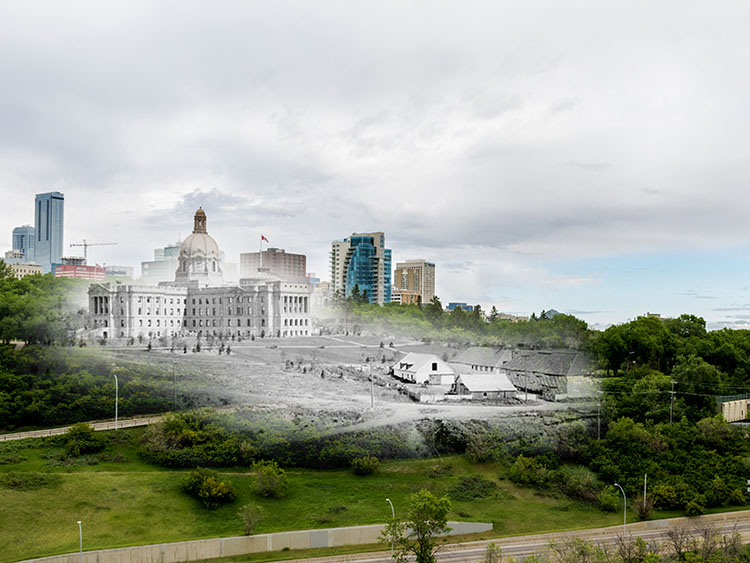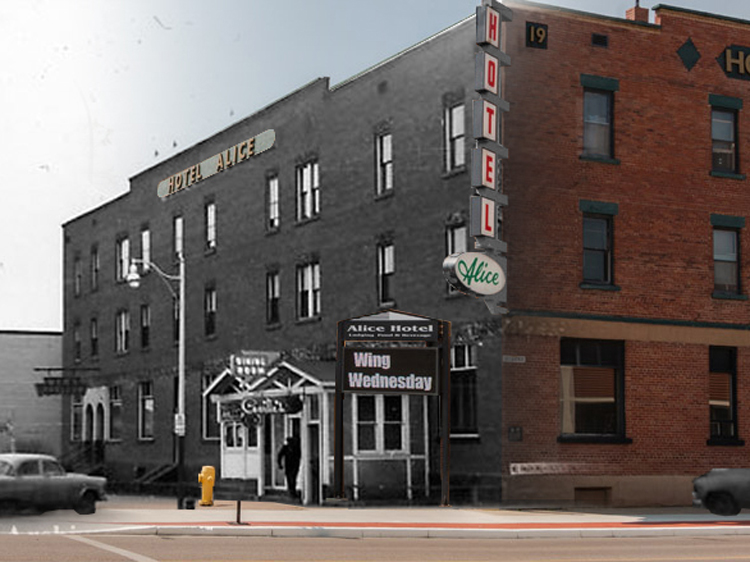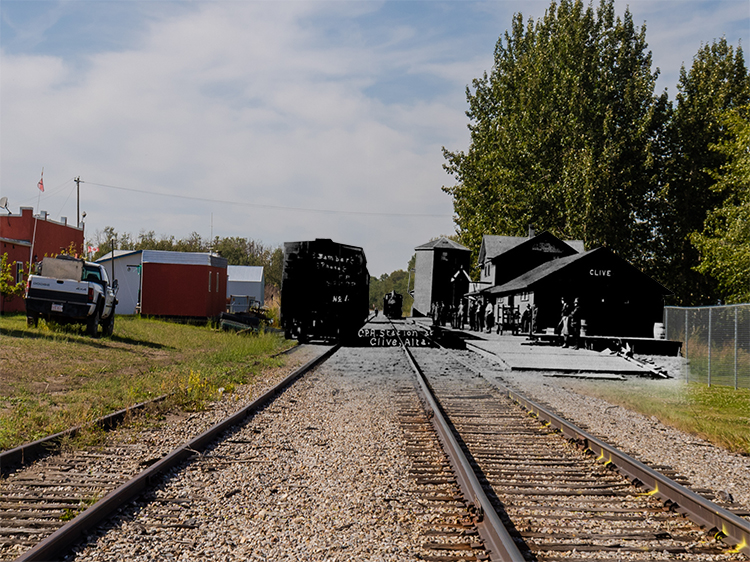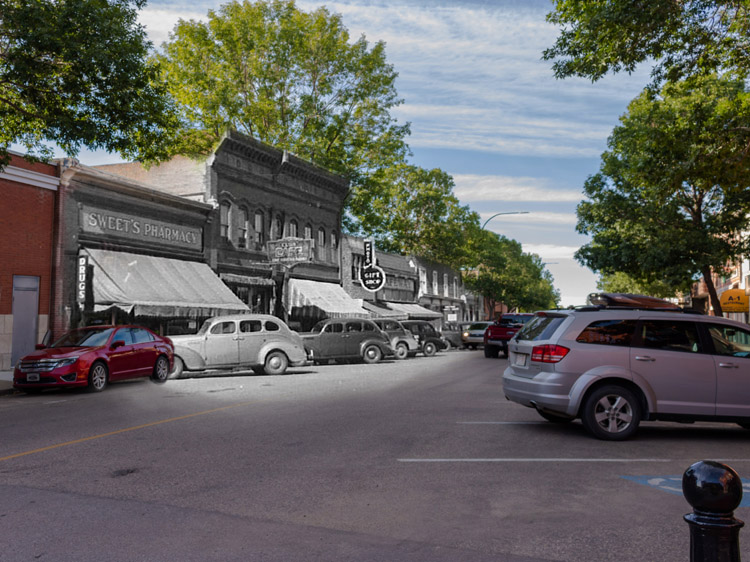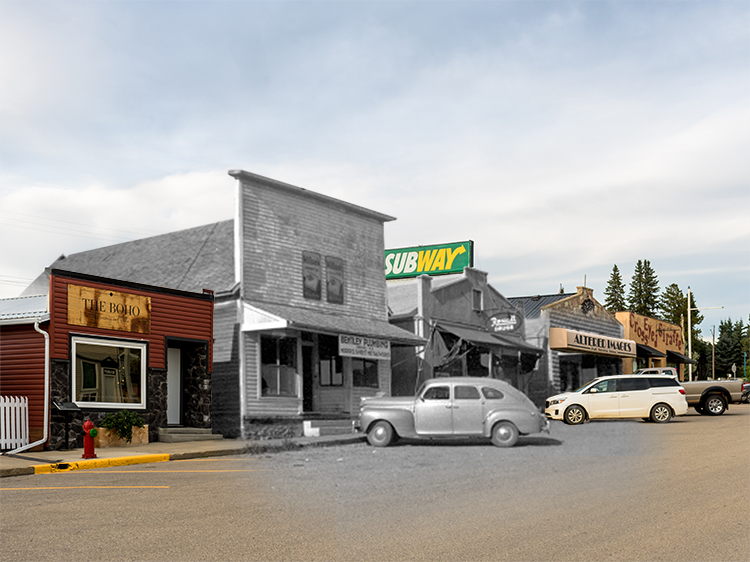Walking Tour
Playing on the Prairies
Leduc's History of Recreation
By Elyse Abma-Bouma

City of Leduc Photo Collection
Not all was hard work toiling in the heat or cold in Leduc. Plenty of activities and community events were a staple in building community and creating friendships during Leduc's early days.
This tour will start at the civic centre and meander past playgrounds, arenas, and theatres that once were showing the past joys of recreation for settlers.
This project was completed in partnership with the City of Leduc.
1. Leduc's Civic Centre
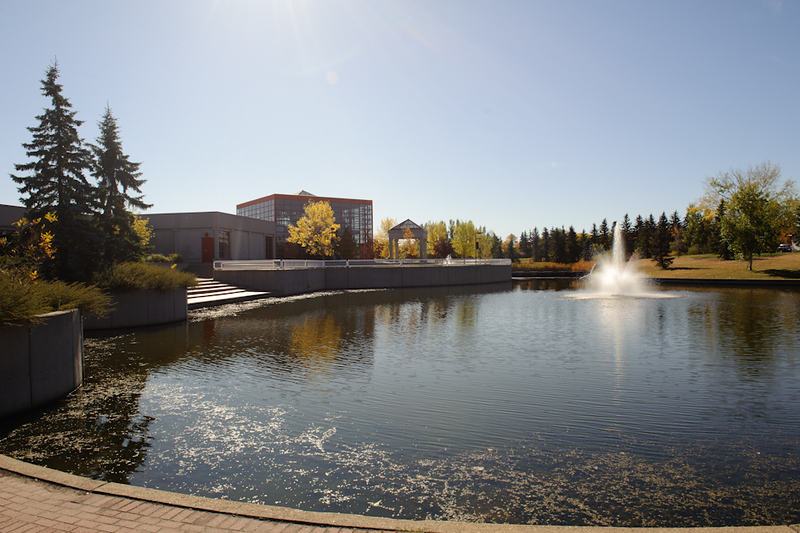
When the Canadian Pacific Railway placed a telegraph station on the Calgary-Edmonton section of the railway in 1891, they could not have known the story that was set into motion. A story about a town called Leduc.
* * *
Behind the dirty hands and dusty roads were the faces of people who had hobbies and enjoyment. The work was hard and the days long but there was always time to pull out the fiddle and dance on the porch or play pond hockey on Telford Lake.
As you stand here at the start of the tour, look out at the arena, library and recreation facilities that Leduc has built over the years. Leduc is a city that prioritizes leisure and sports but mostly working hard and playing hard. As we go through this tour remember that the early settlers of Leduc were people who loved skating, music, dancing, birthdays and holidays just like we do today.
2. Music
City of Leduc Photo Collection
ca. 1940s - 1950s
Leduc's dentist Dr. Ward founded this community band. For years Dr. Cecil Ward organized and conducted the band composed of men and women alike including his own wife. This particular photo of the band was taken on July 1, 1936 where the grandstand once was. Dr. Ward can be seen standing on the far right and Mrs. Ward in the front row with a saxophone.1
* * *
First time I met that girl / it was at an Appleski dance, / the way she threw her feet around / Her arm and around her dancing / Al à main left and elbow swing / Ayi wesh day hi no / Ni-sâkih-ik, ni-sâkih-âw, [she loves me, I love her.] / Kwayês nama ci? [isn't that right?]"2
The way we listen to music has also changed. By the 1900s the phonograph was a well known device that could playback recording, but they were not necessarily a household item. This meant that the music being consumed in the late 1800s and early 1900s was mostly live performance. Marching bands, community bands and acoustic instruments and song were commonplace, much different from modern day music performances that rely heavily on speakers and microphones.
Even the poorest people with few possessions could be found humming while hanging the laundry or singing during the harvest.
3. The Leduc Fair
ca. 1909
Taken at the 1909 Leduc Fair we can see here judges evaluating the year's most impressive horses. The fair had many different categories for livestock, vegetables, and different skills where Leduc could see the best of the best.
* * *
Fall fairs were one of the biggest celebrations that an agricultural town could offer. After a long season of planting, growth and harvest everyone came together to show off their biggest squashes and finest horses. The celebration was not only about what was harvested but of the end of long days in the field sweating over the thresher. There was now time for leisure, for baseball and horse riding. Going into the winter months everyone would pull out their toboggans and dust off their skates for all of the activities that winter brings.
4. Playgrounds

ca. 1950s
Photographed in the 1960s this playground is one of many that have existed throughout Leduc. We can see picnic tables and children crawling through cement tunnels with a small grove of birch trees nearby. A seesaw in the background seems to be the highlight of the park with a number of children gathered around.1
* * *
Recreation for children increased in importance as communities like Leduc grew. Just like adults, children worked hard on farms and in stores from a young age. As the hamlet grew into a town and then a city programming for children and families became a priority.
The County of Leduc will be sponsoring a Family Craft and Recreation Camp… at Zeiner Park. The camp allows the entire family to become involved in various nature oriented crafts and recreation activities. Some of the activities that will be offered include: [Pottery], Willow Basketry, Leathercrafts…Landscape Painting [and] Day Camps for children … and a supervised playground program.3
Playgrounds like the one pictured here were popularized in the 1950s and called "Junk Playgrounds." The collection of concrete tunnels and seesaws provided Leduc's children with a space to play and let their imaginations run wild.
5. The Arena
City of Leduc Photo Collection
ca. 1970s
The Leduc Arena (now the Alexandra Arena) opened December 12, 1952 with a huge community celebration. We can still see the structure today as it existed then today. The arena features bowstring roof trusses with steel cables. The structure was built with walls that passed the floor reinforcing it.1
* * *
Busy Leduc: 1940- and leap year Commencing to day, school opens at 9:15 in the morning. The skating rink is now going full swing with lights and everything complete.3
Into the 1940s and 50s people kept prioritizing leisure activities investing in upgrades to ice surfaces and structures. Curling clubs, skate lessons and hockey leagues developed large memberships and towns held competitions against each other.
Curling Season Opens: The curling season opened Monday night with the start of the annual play down competition for the Ackerman trophy.4
The arena in front of you today has been bringing joy and exercise the community for over fifty years with many more to come.
6. Hockey
City of Leduc Photo Collection
ca. 1950s
In 1932 Leduc's Tuxis hockey team played their games on outdoor ice. With the funeral home standing here today, you would hardly know that this was once the location of premier game ice for Leduc's hockey teams.1
* * *
One of Canada's first professional hockey leagues was founded right here in Alberta. The Alberta Professional Hockey League started in 1907 and included the Edmonton Pros, Strathcona Shamrocks and North Battleford. The league lasted only a few years with the Edmonton Pros winning each season and even challenging for the Stanley Cup.3 In Leduc hockey remains a strong throughline of community over the years.
WIth only one practice under their belt, St. Albert Comets took a drubbing from the Leduc Oilers in the opening game of the Edmonton Central Hockey League last Wednesday. Coach Ron Yanosik's squad played quite well in the opening few minutes of the first period and missed several good scoring chances…Lack of practice and a number of old legs could not keep up the pace as Leduc scored four more times to win 9-1.4
Hockey was always well suited to be a sport of the prairies with an abundance of frozen ponds and chilling winters. It's no surprise that both in the 1930s and today we can find skaters of all ages joined together on some pond ice with two nets and a puck.
7. The Gaiety Theatre
City of Leduc Photo Collection
ca. 1960s
The Gaiety Theatre was built by Manny Pyrez in September of 1947. The following year the building would be consumed by a fire only to be built up again in 1948. This location was the first building devoted to cinema and exclusively for showing films.1
* * *
The province censored [movies] to accord with provincial standards, and thus met, to all intents and purposes, any local concern about their moral impact. Rarely having any local content, films relied on their inherent magical qualities, their technology and a star system to attract audiences.2
Unlike many prairie towns Leduc was late to have an established movie theatre. The Gaiety Theatre opened in 1947 with movies being shown at Telford Hall up until then. Afterward, a drive in theatre popped up as well to accommodate a growing desire to watch films.
But even past Albertans were critical of each movie. An Edmonton critique of "Citizen Kane" called the iconic film "by no means the greatest film of all time" and "occasionally dull" before commenting on how prairie people prefer their entertainment:
Edmonton people stayed away from [Citizen Kane] in droves, I understand. Since Edmonton fans, like most others, want their entertainment straight, I can scarcely blame them.3
Today the movie theatre is elsewhere in Leduc, but that should not stop you from imagining the line up of film buffs lining up around the corner to purchase their movie tickets and see the latest films here. Though different from today's chain theatres, movies still brought a little magic to Leduc just as they do for us now.
8. Parading
City of Leduc Photo Collection
ca. 1910s
As cars line up behind the band in front of Massey-Harris Farm Equipment, we can see Leduc getting ready for a parade through its dirt street. In honour of the Leduc Chapter of the United Farmers of Alberta, this parade was held in 1916 to celebrate Leduc's agricultural prowess.1
* * *
Parades were popular for community togetherness but also for showing off vehicles. With the rise of popularity of cars those who owned them liked to show them off, and what better way than with a parade:
Without the formal organization of an automobile club, the auto owners of Leduc and district to the number of from 30 to 50 will muster at Leduc on the afternoon of Friday…and headed by the Leduc brass band, will motor 20 miles along the Edmonton trail and parade Jasper and the other avenues of the city in their specially decorated cars.3
Parades and public celebrations were a fundamental part of prairie life. Being an agricultural community people worked hard, long days, it was celebrations and holidays that gave long days purpose and something to look forward to.
9. Banquets and Parties
City of Leduc Photo Collection
ca. 1910s
Though not located here anymore, the Leland Hotel is pictured on this spot in 1910 with the owners standing in front of the door and a group of patrons to the left in the photo. Over the years this building has served as home to many businesses including the post office and a law office as well.1
Though the hotel's life was short lived (only eighteen years) the Leland was know for its dining experience and atmosphere. The Leland was built in the late 1800s and moved to main street in 1910 and always offered an memorable dining experience:
Dining out at the Leland Hotel could be an elegant experience...Lace curtains and white table linen where the order of the day. A hearty menu of homemade fare was available to satisfy the appetite of the many guests.2
The bar at the Leland was always an excellent place for a beer, a hot meal or as a location to host your event. Hotels like the Leland were homes to restaurants and banquet halls which were excellent locations for gatherings. Even the average night could become festive with the Leland hotel being a favourite spot for a pint of beer or spirits.
* * *
Dining out at the Leland Hotel could be an elegant experience...Lace curtains and white table linen where the order of the day. A hearty menu of homemade fare was available to satisfy the appetite of the many guests.2
The bar at the Leland was always an excellent place for a beer, a hot meal or as a location to host your event. Hotels like the Leland were homes to restaurants and banquet halls which were excellent locations for gatherings. Even the average night could become festive with the Leland hotel being a favourite spot for a pint of beer or spirits.
10. Home and Family
Provincial Archives of Alberta BA 235
Just past the house in front of us we can see the peak of the Gaetz House roof. Overlooking Telford Lake this house was built in 1910 and a display of the status and wealth of C.W. Gaetz, a prominent citizen of Leduc.
* * *
An estate such as this one would have been quite luxurious. Running water was an anomaly in the early 1900s but this state of the art home was meant to be the height of luxury at the time in Leduc. The pigeon house is something less familiar to us today as well. In the 1800s and 1900s domestic pigeons were kept as carriers but also for their meat and eggs. European pigeon houses were sometimes tower-like and many storeys tall, however Gaetz Pigeon house likely was more like a fancy chicken coop.2
Tennis courts provided a different kind of private elite leisure. Unlike hockey or community bands which were much more accessible, private tennis courts required a personal invitation from the wealthy family in Leduc. Though exclusive, this type of wealth indicated a certain status in the community and their leisure activities were reflected in that.
With a lakeview and a terrace to look out upon Leduc both the Gaetz and Carroll families enjoyed the more upscale side of Leduc life and brought luxury to the little prairie town.
11. Riding
City of Leduc Photo Collection
ca. 1910s
Though the exact date of this photo is unknown, it was likely taken prior to the first world war. The Leduc Saddle Club was organized by the ladies of Leduc including Mrs. Telford who is pictured just left of centre in a black jacket.1
* * *
Many different clubs and organizations existed in Leduc for people to gather based on their interests. Fraternal organizations such as the Masons or Lions club offered men membership activities. Hockey clubs were created for men and boys to compete with teams from other cities and churches offered charitable opportunities as well as community events. The Saddle Club hosted everything horses from gymkhanas (obstacle horse events) to a sunday evening group ride:
The [Saddle Club] would like to invite the young wrangler, the old cow hand, the dude next door, and the Granny (if she's a barrel racer!) "anyone" with an interest in horses.2
For a small fee and a whole lot of fun horse owners could join in the antics of the Saddle Club and, even if you didn't have a horse, events had many spectators to watch the competitions and shows.
12. Water Sports
ca. 1920
Known as Leduc Lake before it became Telford Lake this postcard photo was taken sometime between 1904 and 1920. The lake was and still is a prominent feature in Leduc for recreation purposes such as boating which we can see in this photo.1
* * *
Telford lake is high now and offers great advantages to pic-nic and camping parties…A lacrosse team has been started at Leduc. It is suggested that if the Edmonton team would get up a pic-nic at Leduc, there would be good opportunity for a practice game.2
All work and no play makes for dull stories, but Leduc was anything but! Though early settlers in Leduc worked very hard farming, running households, teaching, sewing, milking and harvesting there was always time for a hockey game, horse ride or a little music and dancing.
Endnotes
2. Music
1. "Leduc Reflections" (1981)
2. Whidden, Lynn. "Music of the Métis." The Canadian Encyclopedia Historica Canada (February 07, 2006); Last Edited December 16, 2013.
3. The Leduc Fair
1. "Leduc's Fair a Huge Success" The Edmonton Bulletin (September 16, 1908)
'.
4. Playgrounds
1. "Leduc Reflections" (1981)
2. O'Shea, Kaitlin "How We Came to Play" SavingPlaces.org (August 15, 2013) https://savingplaces.org/stories/how-we-came-to-play-the-history-of-playgrounds/#.YXeB0GjYrrc
3. "Recreation News" The Gazette, St. Albert (June 21, 1978)
5. The Arena
1. "Leduc Reflections" (1981)
2. "Interwar Leisure and Recreation ." Encyclopedia of Recreation and Leisure in America. . Encyclopedia.com. (November 24, 2021). https://www.encyclopedia.com/humanities/encyclopedias-almanacs-transcripts-and-maps/interwar-leisure-and-recreation
3. Leduc Representative (January 4, 1940)
4. Leduc Representative (January 11, 1940)
6. Hockey
1. "Leduc Reflections" (1981)
2. Marsh, James H.. "Ice Hockey in Canada." The Canadian Encyclopedia. Historica Canada (July 21, 2013; Last Edited March 04, 2015).
3. "Professional Hockey Leagues" Hockey League History. https://hockeyleaguehistory.com/Western_Canada_Hockey_League_1921.htm
4. "Comets lose two as League play begins" St. Albert & Sturgeon Gazette (November 12, 1970) Page 2.
7. The Gaiety Theatre
1. "Leduc Reflections" (1981)
2. Wetherell, Donald G. and Kmet, Irene R.A. Town Life. University of Alberta Press (1995) 223.
3. Pine, Corwin "Cinema Synopsis" The Gateway (December 2, 1941) Page 2.
8. Parading
1. "Leduc Reflections" (1981)
2. Wetherell, Donald G. and Kmet, Irene R.A. Town Life. University of Alberta Press (1995) 260.
3. "Fleet of Autos From Leduc Will Parade Jasper Avenue as Publicity for Fall Fair" The Edmonton Bulletin (August 25, 1917) Page 24.
9. Banquets and Parties
1. "Leduc Reflections" (1981)
2. "Leduc Reflections" (1981)
10. Home and Family
1. "Leduc Reflections" (1981)
2. History of Early American Landscape Design contributors, "Dovecote/Pigeon house," History of Early American Landscape Design, heald.nga.gov
11. Riding
1. "Leduc Reflections" (1981)
2. "Legal Locals" The Gazette (St. Albert, Alta.)(May 11, 1977) Page 9.
12. Water Sports
1. "Leduc Reflections" (1981)
2. "Leduc" The Edmonton Bulletin (June 23, 1902) Page 5.




